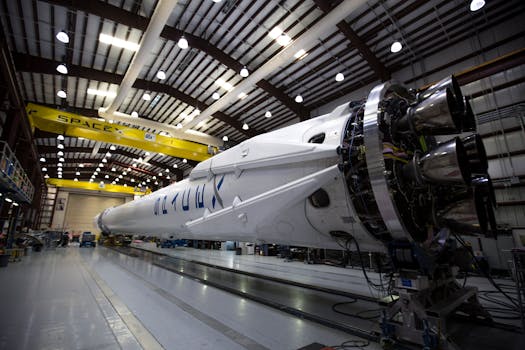The Rise of Mega-Constellations: Latest Updates in Satellite Telecommunications

The Rise of Mega-Constellations: Latest Updates in Satellite Telecommunications
Mega-Constellations and Satellite Telecommunications

The rise of mega-constellations is a significant trend in satellite telecommunications, with several companies launching large fleets of satellites into low Earth orbit (LEO) to provide global internet connectivity. Mega-Constellations and Satellite Telecommunications are revolutionizing the way we communicate, with the potential to bring high-speed internet access to remote and underserved communities around the world. One of the key drivers of this trend is the decreasing cost of launching satellites into space, which has made it more feasible for companies to launch large constellations of satellites. Additionally, advancements in technology have enabled the development of smaller, more efficient satellites that can provide high-quality internet connectivity. Companies like SpaceX and OneWeb are leading the charge in the development of mega-constellations, with plans to launch thousands of satellites into LEO in the coming years. These constellations will provide a range of services, including broadband internet, Earth observation, and navigation.
Latest Updates and Developments

There have been several recent developments in the field of mega-constellations and satellite telecommunications. For example, SpaceX has launched several batches of its Starlink satellites, which will provide high-speed internet connectivity to consumers around the world. The company has also announced plans to launch a new constellation of satellites called Starship, which will provide a range of services including broadband internet and Earth observation. OneWeb has also made significant progress in the development of its constellation, with the launch of its first six satellites in February 2020. The company plans to launch a total of 648 satellites into LEO, which will provide high-speed internet connectivity to consumers around the world. Other companies, such as Amazon and Facebook, are also investing in the development of mega-constellations. Amazon has announced plans to launch a constellation of 3,236 satellites called Kuiper Systems, which will provide high-speed internet connectivity to consumers around the world. Facebook has also announced plans to launch a constellation of satellites, which will provide internet connectivity to remote and underserved communities around the world.
Challenges and Opportunities

While the development of mega-constellations and satellite telecommunications offers many opportunities, there are also several challenges that need to be addressed. One of the key challenges is the risk of space debris, which can pose a significant threat to the safety of satellites and other spacecraft in Earth’s orbit. Another challenge is the need for regulatory frameworks that can govern the development and operation of mega-constellations. There is a need for international cooperation and agreement on issues such as spectrum allocation, satellite licensing, and liability for space debris. Despite these challenges, the development of mega-constellations and satellite telecommunications offers many opportunities for innovation and investment. The potential to bring high-speed internet access to remote and underserved communities around the world is a significant one, and could have a major impact on economic development and social welfare.
Conclusion

In conclusion, the rise of mega-constellations is a significant trend in satellite telecommunications, with the potential to bring high-speed internet access to remote and underserved communities around the world. While there are several challenges that need to be addressed, the opportunities for innovation and investment are significant, and the development of mega-constellations is likely to have a major impact on the future of satellite telecommunications.
See more:




